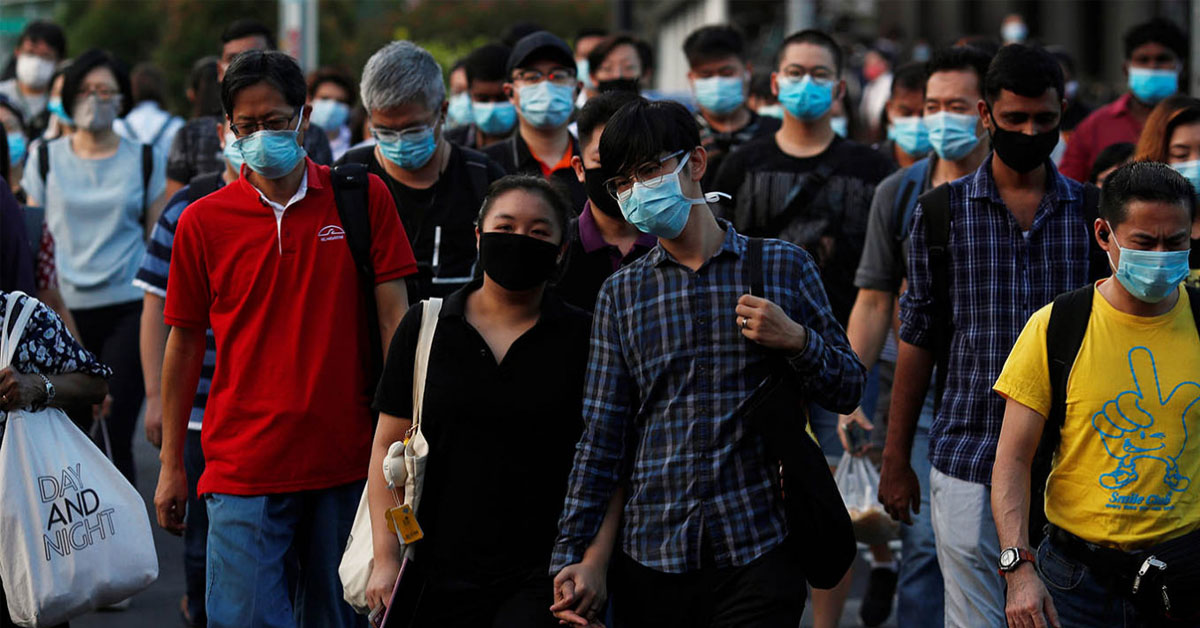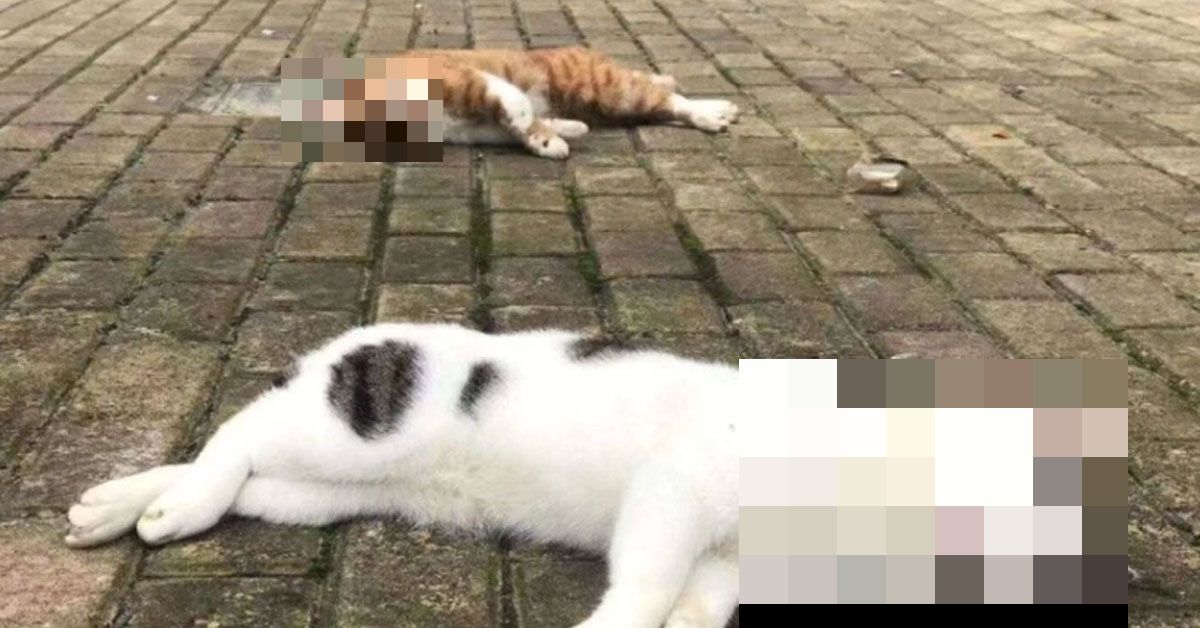Lest you’ve not been in the loop about the antibody test hoo-ha because you’re more concerned about the closure of bubble tea shops than the new discoveries of the coronavirus, don’t worry: I’ve got your back, and I’ll explain it in Goody Feed style so that even your 5-year-old niece can understand.
For a start, testing for COVID-19 is a tedious process: you’d have to do a swab on a suspect and send the sample back to the lab, whereby the sample goes through some high-tech process which involves changing its temperature millions of times and turning RNA to DNA.
You can watch this video to learn more:
This testing is very accurate and is real-time—that means it can determine whether the nasty bug is in a patient or not. But that’s that: the virus is either there or it’s not there.
People with brainy brains are finding ways to hasten the process and are even creating kits that can be used off-site, but that’s for another article.
The above test is known as PCR test—nothing to do with Phua Chua Kang as PCR means Polymerase Chain Reaction test.
In recent weeks, another type of test has been hogging the headlines: serological test, or commonly known as antibody test.
Antibody Test, a Quick Test
Instead of getting a person’s sample through the nose and spending hours on it in a machine to determine whether coronavirus has booked an Airbnb in it, antibody test is a tad different.
Actually, very different.
You see, when a person’s infected with any virus, the body (or to be more specific, your white blood cells) would spend some time to create something known as an antibody. Once it’s created, it’ll recognise the virus and “kill” it. That is how many of us fight off the tons of virus lurking in the air.
And here’s the best-est thing: when the body has created the antibody, it’ll remember it and let it stay in the body, so that should the virus come back, it’ll kill it immediately.
In other words, anyone who’s been infected with, say, T-Virus, and have recovered would have built an immunity to it as the body now has an antibody to slay the T-Virus.
Now, do note that WHO has specifically mentioned that it’s not confirmed whether a person would be immune to COVID-19 once he or she has fought off the virus, so don’t think you’ve an immunity passport once you’ve been infected.
So what this test does is simple: you simply give your doctor your blood, and from there, the kind doctor can detect whether you’ve the antibody that kills the coronavirus.
The goody thing is that this means it can also detect whether you once have the virus and have recovered. That can’t be done with PCR test as that would only determine whether you have the virus now or not.
But here’s the baddy thing: the virus is so new, no one knows how long it takes for the antibodies to be created in the body, but some reports suggest that it’ll take about 11 to 14 days before your white blood cells started to say, “Damn, this is bad, let’s just create an antibody to destroy it.”
Moreover, in recent days, due to the easing of regulations for these test kits (primarily for them to be ready earlier), some experts claim that they are not that accurate, with a false positive of up to 20% for smaller companies that develop these kits.
That means up to 20% of the results show the presence of COVID-19 antibodies but it could be the antibodies of, erm, the common flu.
And of course, everything’s so new so no one knows how true that is.
So now you see the advantages and disadvantages of the test by reading more than 600 words, here’s the meat of this article:
Latest New York Mass Antibody Test Results Suggest Death Rate for COVID-19 Could Be Lower
New York’s not having a good start to 2020: the place that Peter Parker lives in now has 172K confirmed cases and over 13K deaths, making it the worst-hit state in the US.
And the Governor (think of a Governor as the President of the state), who has become some sort of celebrity due to his strongly-worded statements against the Federal Government (read: Trump), did a mass antibody test back about two weeks back and got a shocking result:
Of the 3,000 random shoppers they tested, 14% turned out positive.
Back then, the Governor said that the results might not be accurate since the sample size is too small (3,000) and test kits might not be accurate (you understand this thank to my 600-word intro).
Follow us on Telegram for more informative & easy-to-read articles, or download the Goody Feed app for articles you can’t find on Facebook!
Other places also did the same test, and results were just as, erm, shocking: the number of cases could be 50 to 85 times more than what is reported.
But most of the studies are done in small regions with fewer infections, while New York is big and is considered an epicentre of the coronavirus, so everyone’s eyes are on them.
Advertisements
Yesterday might (which is New York’s morning), the Governor took to stage to report the results of more studies they’ve done, and this time, he seems to believe in the numbers.
Here’s the chart that was shown during his press conference:

If the first test isn’t accurate, the average should show that it’s actually pretty spot-on: on average, that’s about 13% of New Yorkers being COVID-19 positive before.
And remember: it takes 11 to 14 days for the antibodies to be present in the blood, so that figure could be higher.
Advertisements
Based on the detected confirmed cases in New York, the infection rate is at about 2% of the population. 13% would mean it’s grossly undercounted.
Which leads to the next important thing: fatality rate.
If you look at the worldwide figures, the fatality rate now is at about 7.1%. That is definitely not accurate as undeveloped countries would not have done enough testing.
But based on New York’s antibody test numbers, that means there’s a total of 1.1 million cases and 13k deaths, so the fatality rate now drops to 1.18%. Still a lot higher than the common flu, which is at 0.1%, but much lower than the figures we’re get from the official sources.
However, do note that this is still far from herd immunity, which requires at least 60% of the population to be immune to the virus.
So, what does this tell us?
For a start, the rate of infection in those worst-hit regions could be way higher than reported so far. Secondly, the fatality rate could be lower than expected.
And thirdly, we learn something new every day. In fact, this latest revelation was reported less than a day ago.
Advertisements
So keep yourself updated by bookmarking MOH’s website here and registering for the Gov.sg’s WhatsApp service here.
Or if you’re young, you can join Gov.sg’s Telegram channel and do remember to join the Goody Feed Telegram channel, too.
Also, do subscribe to our YouTube channel whereby we’d update you daily on what’s happening in Singapore – including, of course, about the nasty bug that’s been disrupting all our lives:



